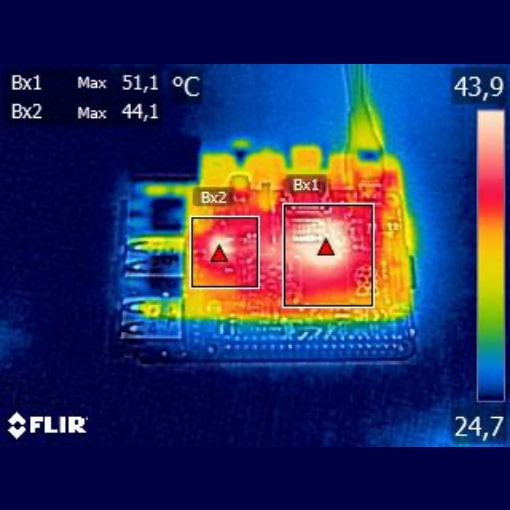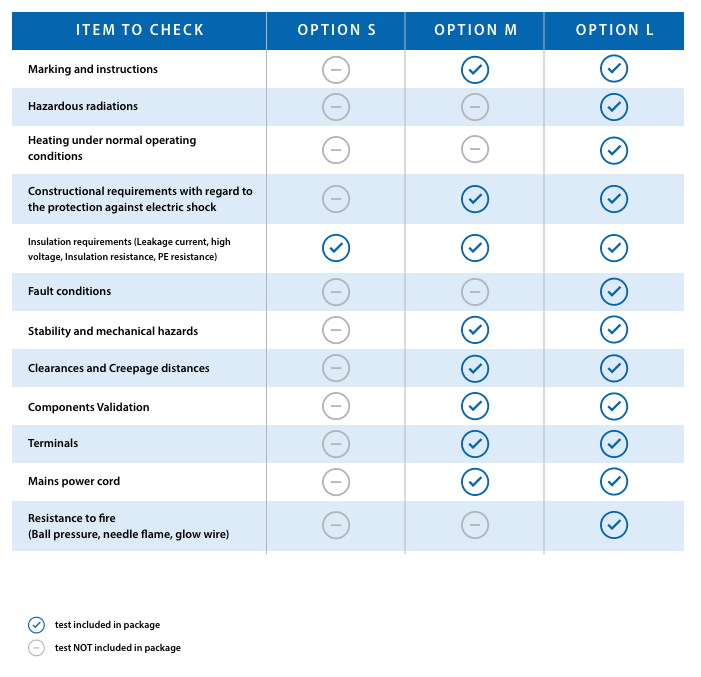Product standards
Extreme temperatures, mechanical hazards or radioactivity: Electrical devices are exposed to widely different stresses during their service life. With our numerous test procedures, we determine whether your product is adequately protected from them.
Electrical tests are indispensable to ensure safe operation of electrical devices. Therefore, different entities like the International Electrotechnical Commission (IEC) or the International Association of Classification Societies (IACS) have developed strict guidelines that manufacturers of such devices have to comply with to be able to sell them worldwide.
The IEC standards provide the lead for these tests: But in addition, there are also other national and international standards that devices must fulfil in respect of electrical safety. We offer a wide spectrum of compliance services that make it possible for our customers to guarantee the safety of their devices in the framework of different standards.
To that end, we have defined test bundles for every application case, which depict the requirement of a preliminary, partial or full test. Jointly with our customers, we always select the test package that is suitable for them.
Option S offers a general basic safety with regard to electrical shock and is ideally suited for accompanying the development phase. It consists of the modules leakage current, high voltage, insulation resistance and PE resistance test. During this, a visual inspection of the test specimen is carried out, from which initial conclusions regarding the safety level can be derived.
Option M represents an increased safety aspect as compared to Option S. Apart from the tests for the leakage current, high voltage, insulation resistance and PE resistance, there are checks for markings, for access to active parts and for the mechanical strength. In addition, tests are carried out for the air gap and creep distance at the agreed test voltage. In consequence, the components are evaluated according to their deployment and the respective component standard.
Option L corresponds to the highest safety requirements. A complete test according to the standard is carried out. Additional modules for the safety of devices are considered in this test. Over and above Options S and L, this option mainly deals with the heating up of devices and the danger that arises as a result when there is a fault. In addition, based on the submitted data and certificates, the hazards of the spread of fire, radiation and environmental influences are validated according to the desired device standard.
We support our customers for the compliance of their products with the following basic standards:
- EN 61010-1 (Safety requirements for electrical equipment for measurement, control, and laboratory use - Part 1: General requirements)
EN 61010-1 is the basic standard for electrical equipment for measurement, control, and laboratory devices In conjunction with the corresponding subsidiary norms, it forms a universal tool to test a large number of devices that are used in laboratories or in industrial process engineering.
Examples of devices that come under the EN 61010-1 standard are:
Multimeters, laboratory devices for heating/cooling of substances, measurement and control devices from industrial applications etc.
- EN 62368-1 (Audio/video, information and communication technology equipment - Part 1: Safety requirements)
The EN 62368-1 standard replaces the original EN 60065 and EN 60590 standards.
Examples of devices that come under the EN 62368-1 standard are:
Servers, PCs, routers, notebook/laptop computers and their power supplies, digital cameras and music players, monitors, TVs and digital projectors, cordless and mobile phones, copiers and shredders, musical instruments etc.
- EN 60598-1 (Luminaires - Part 1: General requirements and tests)
The EN 60598-1 standard defines the general requirements for luminaires. Together with its corresponding subsidiary standards, it forms a universal tool for testing different types of lamps. In combination with typical composite standards for LED modules and ballasts, a wide variety of light sources can be implanted.
Examples of devices that come under the EN 60598-1 standard are:
Fixed lamps, table lamps, headlamps, emergency lights etc.
To ensure compliance with these standards, a product has to go through different safety tests.
The tests most frequently required by the standards are:
- Insulation resistance test / High-voltage test
- Protective conductor resistance measurement
- Leakage current and protective conductor current measurement
- Access to active parts
- Heating up test
- Fault in operation
- Mechanical strength
- IP (IEC 60529) and IK (IEC 62262)
- Measurement of air gap and creepage distances
- Marking and instruction examination
- Constructive inspection corresponding to the components used


Testing? Treo
ELECTRICAL SAFETY
Testing areas:
Testing? Treo.
Product standards
for electrical safety




